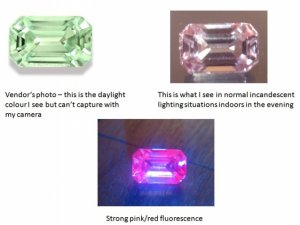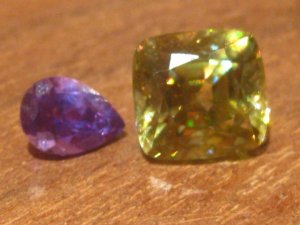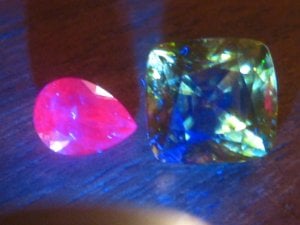Hi all,
I purchased a sapphire that showed PINK color in the store. It's unheated, and almost flawless in clarity. When I did bring it outside in the day-light the color turns WHITE (D-Z), not chalky. The origin is Sri Lanka, so it has PINK fluor. Is there any specific reason the sapphire got PINK fluor?
UV (SW) - PINK
UV (LW) - PINK
Day-light - WHITE
Fluorescent - VIOLET
Incandescent - VIOLET
I purchased a sapphire that showed PINK color in the store. It's unheated, and almost flawless in clarity. When I did bring it outside in the day-light the color turns WHITE (D-Z), not chalky. The origin is Sri Lanka, so it has PINK fluor. Is there any specific reason the sapphire got PINK fluor?
UV (SW) - PINK
UV (LW) - PINK
Day-light - WHITE
Fluorescent - VIOLET
Incandescent - VIOLET







300x240.png)